Will a Residential Deck Increase My Property Taxes?
Good question. All over the world, property taxes are always based on the value of the house. So here’s what happens: A residential deck will increase the value of your home at the time of the assessment, which means that your property taxes will also go up.
The question now is how much? Again, it will depend on the size of the deck, the design, and the location that you are in. The assessor will not evaluate the deck as a separate construction but rather a distinct component of your home. You are likely going to pay less compared to a complete home addition like a basement or another room.
In some cases, you are not going to pay the taxes right away. While in others, you will be slapped with the new charge the next time you complete the form for your property levies. In some locations, the new rates will take effect after you filled up your business permit. Meanwhile, some cities have a strict schedule to follow so you may not feel the burden in two or three years.
What are the Legislations that Cover Residential Decks?
The Ontario Building Code is the bible for any residential or commercial construction in Ontario. However, cities also have their own local laws and ordinances that will cover the addition of a new residential deck.
Their functions are separate:
- The building code will cover safety, structural integrity, public health, and construction
- Local zoning laws will provide additional guidelines in the development, as well as ensure that the rights of the residents are protected
Both follow the National Building Code of Canada, and are prohibited from going beyond the basic parameters set in the law.
Why Do I Need a Building Permit?
The Building Code Act lays down the legal foundation of any residential or commercial development. This includes a raised deck, an attached deck, or a deck adjacent to the original structure. City laws, however, have their own rules for the building permit, particularly on the size and uncovered deck or its construction in relation to the ground level, as well as the location of the deck.
For example, if your deck is located in the backyard and it’s raised less than two feet above grade, then you may be exempt from zoning. Go beyond the two-foot yardstick and zoning laws will apply. Zoning will also take effect if you are building the deck on the front or the side where it can be immediately seen. Your contractor should be able to explain this further to you.
It should be noted, however, that not all decks will be approved, such as when the main structure could not support the new addition without reinforcing the foundation or beam support if the deck has a roof. Applying the recommended changes will cost you a substantial sum. Also, homeowner associations may balk at the changes.
Railing Requirements in the Ontario Building Code
City inspectors will generally look at the deck foundation, structure, as well as the handrails and guardrails to make sure they meet the minimum standards. We look at the parameters for the handrails and guardrails.
The Ontario Building Code distinguishes between the guardrail and a handrail.
- A handrail as defined is meant to support an individual when going up or down a stair
- A guardrail is used to prevent somebody from falling off a raised platform. However, it can double as support similar to the function of the handrail.
Requirements for Handrails in Ontario:
- Handrails should be installed for stairs with more than three risers
- There should at least be one handrail for the stairway; or two if the risers are 1 100 mm in width or more
- The outside diameter for the handrail should not be more than 43 mm and not less than 30 mm. For top rails that are not circular in shape, the graspable section should not be more than 125 mm
- There should be no break in the handrails, especially one that will compromise the safety of the individual. The handrail should be continuous, even including the landings
- Handrails must be installed on both sides of the ramp
- The height of the top rail should not be more than 965 mm and not less than 865 mm. This covers handrails for stairs, decks, and ramps
- For stairs, the height of the top rail should not less than 34 inches and not more than 38 inches from the risers
- The clearance between the handrail and the wall should not be more than 4.5 inches. However, you can buy prefabricated brackets which already meet the building code standards. This takes away the worry that you are violating the laws
- When two railings are installed, the distance between them should not be less than 27 inches apart. When only one is installed, the distance between the structure and the opposite wall should not be less than 31.5 inches
- The handrail should be able to withstand no less than 0.7 kN/m of load that is applied to all direction of the exterior handrail. In general, the structure should be able to withstand a load of not less than 0.9 kN/m
- For decks, the space between the bottom rail and the surface must not exceed four inches
Requirements for Guardrails:
- You should have guards installed for raised platforms if the total surface reach the 600mm threshold relative to the position of the deck to the adjacent ground
- The guardrails should have a sufficient barrier like when you install pickets or railings. These should not be spaced more than four inches apart
- The guards should be childproof and pet-proof, in the sense that it should be designed where any child can climb on top of the rail.
- The height of the guard must not be less than the minimum of two feet, 11 inches if the elevation is not more than five feet, 11 inches
- The top rail should not be less than 36 inches from the deck surface in a residential dwelling. For commercial establishments, the top rail should not be less than 46 inches
- If glasses are installed instead of pickets, the material should be tempered or laminated for safety reasons. Only credited companies are allowed to install glass on guards
- The guards must be designed to take the load of a person leaning into it. The Occupational Health and Safety Administration requires a minimum of 200 pounds of force on top of the rail. The Supplementary Standards SB-7 also outlines the load factor on the different points of the guards.
How Much it Will Cost Me to Build a Deck?
The numbers vary but it will cost you somewhere between a low of $4,000 and a high of $11,000. On average, however, homeowners spend about $7,500 to build the new additional space.
There are a lot of paperwork when you try to add a deck to your house. Fortunately, most contractors are proficient in this regard. Aside from the requirements on railings and guardrails listed above, they should also make sure that the deck itself passes the criteria on structural integrity. These include:
- Beams and joists
- Landings
- Piers and posts
- Foundation
- Deck blocks
- Composite decking materials used
After you have installed the deck, a city engineer will visit the property to inspect the construction and make sure it doesn’t violate any of the provisions in the building code and the local zoning laws.
Art Metal is a licensed manufacturer and distributor of handrails and guardrails in Ontario. With years of experience in the industry, the company is fully cognizant of the rules and parameters set in Ontario Building Code, along with the local laws on zoning and building permits. We guarantee that the railings and guards for your new deck will comply with the strict regulations of the city every time.
Conclusion
Meeting guardrail requirements is essential for your safety, so it’s important to know and implement all of them. Also, if you don’t feel like you’ll manage including all of the rules, we at Art Metal Workshop will consult you and help with your deck railing installation.



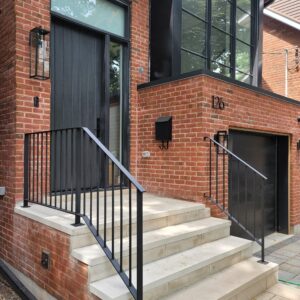
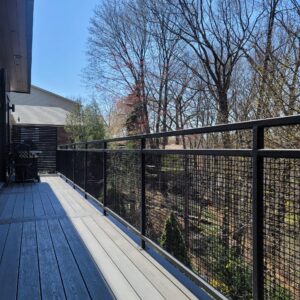
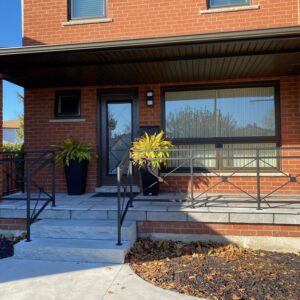
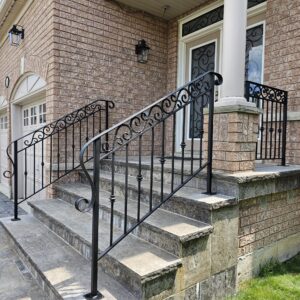

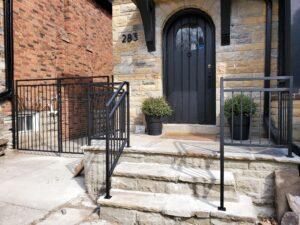

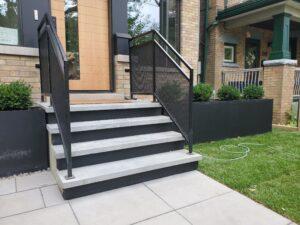
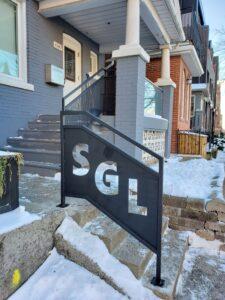










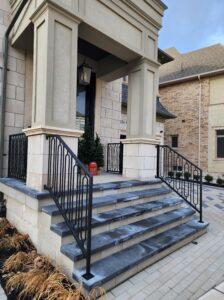


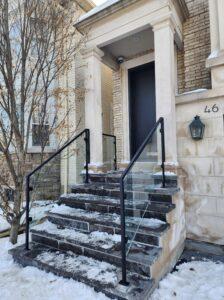

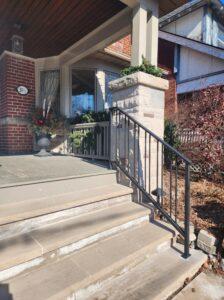
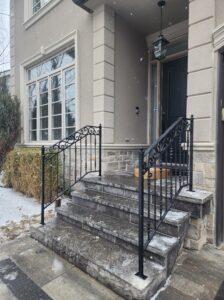


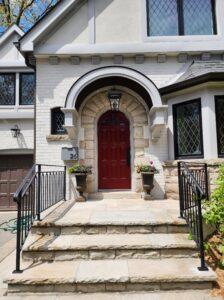



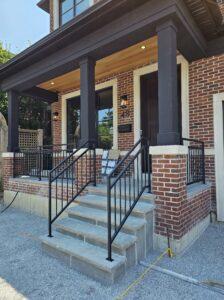








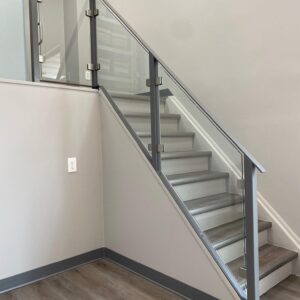

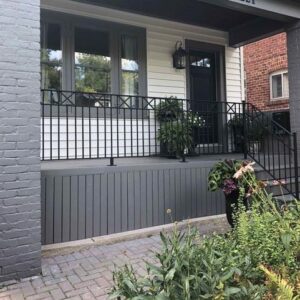
 Chat
Chat 








